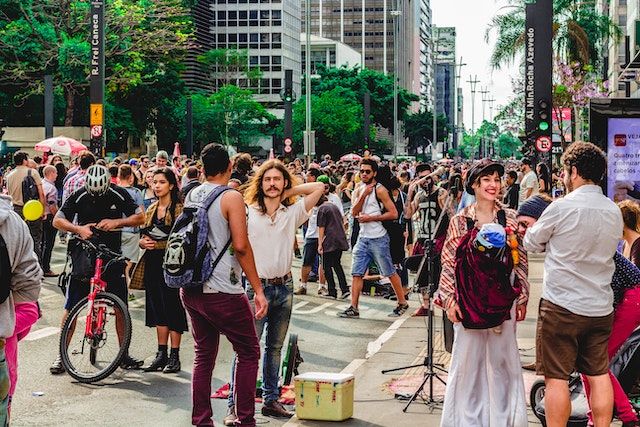We Love the Place, O God

An entire day to mark and celebrate the church building seems like an odd thing in an era when, so often, we hear sermons and see slogans about how "The Church is Not a Building!" This is true, of course. The Church is the people who gather in the name of God; the mystical body of Christ, present in prayer, sacrament, praise, and love. We set aside spaces for those gatherings and erect buildings for the purpose. For most congregations, the building represents the single greatest material asset they own and is probably the most significant investment in their communal history. These buildings are important tools in ministry and so, while the Church may not be a building, our buildings are important places and, if we are faithful in their use, worthy of celebrating.
The Festival of Dedication can take on remarkably different flavours depending on which community you are in when it is celebrated. In my previous parish of St Bartholomew, Windsor Park, we celebrated the parish's 60th anniversary during my time there. The building and parish are nearly the same age, there, and, at the time, there were still living, present members in the congregation who had participated in the fundraising for the foundation of the parish. Famously, one woman and her husband had mortgaged their family home to make a contribution toward the construction of the St Bartholomew church building. When the building's construction still exists within living memory, the celebration of that building - and the absence of debt attached to it - is a very real and present thing. It is the building that the people there worked to build and which they saw rise on a previously vacant lot.
Here at Holy Trinity, we are quite a few generations away from the last person who would have remembered seeing this building rise in the new neighbourhood south of Portage Avenue. None of us remember the fundraising, the planning, the dreaming, the arguments, the lawsuits, and all of the work that went into deciding on what sort of building would best suit the mission of the parish at that time. This great hall is what those ancestors of ours arrived at in all of their work and deliberation and, for us, it is an inheritance. The question before us on this Festival of Dedication, unlike other communities who celebrate the living builders, is how to best employ this inheritance from our long-dead forbears in faith.
Like so many parts of our lives as Christians, there's no simple answer to this question. It would be so easy if someone could just tell us exactly what to do. Keep everything as it is, don't change so much as a lightbulb. Or gut the whole thing and start fresh. Or paint it all pink. Or something. Anything. Would that there were a clear answer. Perhaps if we turn to holy scripture, maybe something will be revealed there and we can proceed with an ancient tradition held foremost in our minds. Alas, the Bible is not much more help here. As we read through the stories of ancient Judea and the people of Israel, we find examples of God rejecting offers of temple-building and then giving instructions on just how a temple ought to be built. Similarly, Jesus has many warnings about temples being used for inappropriate activity, but spends plenty of time there himself. We are also told that human bodies are the temple of the Holy Spirit, which is an important item to reflect on, but not of much help when we consider what we might do with a building.
Our own building here, as we all know and is plain to see, is in need of some assistance. Nobody in 1884 would have imagined that, in 2022, this building would still be here. Indeed, many of this building's siblings across Canada were demolished to make way for new constructions in the 1920s. These are what most people think of when they imagine a "classic" Canadian, Anglican church building. The need to revisit this building's structure and some of its systems also brings an opportunity. Without an easy way forward, without a clear edict from either scripture or a mortal authority, it falls to us - the Church inside the building - to pray mightily for discernment about who God is calling us to be now, 138 years on from the cornerstone's placement. It is the mission to which God has called us that will shape the way we envision the use of our building going forward.
This is not meant to be a fearful thing; the parts of the building that are much beloved and inspire us in our faith should stay. This is part of the good work of a building, after all. But perhaps there are new ways that we can envision being the Church in this space, that speak to the world of the great love and unconditional welcome that God offers to all people. Even as we celebrate the inheritance of this powerful witness left to us by our ancestors, we look for ways to honour their legacy and work while moving, working, and being the Body of Christ in the world. We look for ways to help ourselves flourish as disciples of Christ and to help our neighbourhood flourish as the neighbours we love as much as ourselves. We celebrate the church and the vision given by God to generations past even as we pray together with that same God. God who is here, in this building, and with each of us everywhere we go, moving us to be witnesses for Christ in the world just as this building has been a witness to this neighbourhood for so many generations.
Thanks be to God.
Photo by Toni Ferreira





